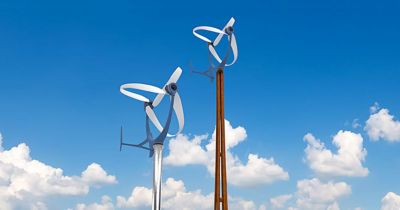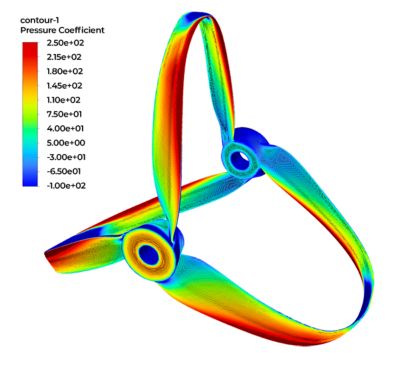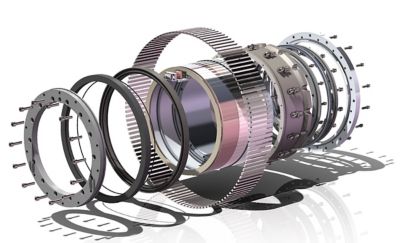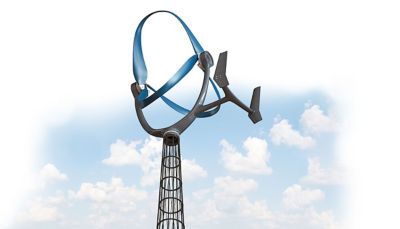-
United States -
United Kingdom -
India -
France -
Deutschland -
Italia -
日本 -
대한민국 -
中国 -
台灣
-
Ansysは、シミュレーションエンジニアリングソフトウェアを学生に無償で提供することで、未来を拓く学生たちの助けとなることを目指しています。
-
Ansysは、シミュレーションエンジニアリングソフトウェアを学生に無償で提供することで、未来を拓く学生たちの助けとなることを目指しています。
-
Ansysは、シミュレーションエンジニアリングソフトウェアを学生に無償で提供することで、未来を拓く学生たちの助けとなることを目指しています。
ANSYS BLOG
August 30, 2023
Winds of Change
Startup siWING is changing the way the world thinks about wind power, with its small turbines designed for private use. The company relies on engineering simulation to maximize power generation, while minimizing product size and weight to appeal to consumers. Its small, aesthetically pleasing designs are poised to make a big impact on the global energy industry.

siWING hopes to make the sight of private wind turbines as commonplace as residential solar panels.
The sight of photovoltaic panels mounted on residential homes has become commonplace as consumers seek to increase their energy independence, control utility costs, and adopt more sustainable practices. An innovative startup company called siWING — shorthand for “smart, intelligent wings”— was founded with the goal of making private wind turbines just as common. Headquartered in Wismar, Denmark, siWING is quietly revolutionizing wind power as it prepares to launch its ROTOLUS product line this fall.
Ranging in size from 6 to 24 meters tall, ROTOLUS turbines are capable of producing more than 25,000 kWh of energy per year — which could provide power for about five homes. Even its smallest designs can generate over 2500 kWh, half of the average home’s annual energy needs. It’s a solution that makes sense from a cost and sustainability perspective. But, according to Dr. Paul Köster, Lead R&D Engineer at siWING, the company still needs to win the hearts and minds of customers.

Airflow through blades as simulated by Ansys Fluent
“Our single biggest challenge has always been product innovation, because we’re trying to change an entire category,” notes Köster. “We believe there is a huge potential audience of private consumers, tradesmen, small and medium-sized companies, and even global corporations that want to equip their branches and subsidiaries with small wind turbines as a visible sign of the energy revolution.
“What all these customers have in common is that they want a reliable product that is absolutely safe to operate, easy and uncomplicated to set up, aesthetically pleasing to look at, runs silently, and delivers as much output as possible,” Köster continues. “The only way siWING has been able to meet all those needs simultaneously is to completely reimagine the traditional wind turbine — including its size, the shape of its blades, its aerodynamics, and other foundational characteristics.”
Köster is confident that the ROTOLUS product line will deliver all these benefits — and he’s led the application of innovative engineering tools and practices, including simulation, to verify every aspect of product performance leading up to the market launch.

Rotor surface pressures as determined by Ansys finite element analysis
Shaping a New Generation of Wind Power
While large commercial wind turbines have a long history of usage and a set of design principles that are generally accepted, Köster and his team were starting from scratch in engineering their smaller turbines. One of the most distinctive features of siWING’s turbines — their uniquely shaped blade design — was born of necessity.

Exploded view of the generator for the siWING wind turbine
“We couldn’t simply downsize a commercial blade design because the shape simply won’t work at such a small scale,” Köster explains. “The blades would have to rotate very quickly and would emit a high level of noise. We had to arrive at our own optimal blade shape. Similarly, we had to completely redesign the mast and explore new materials to reduce vibration. Given the range of consumer needs, and the many forces acting on the product design, we knew from the beginning that we were undertaking a complex engineering task.”
To accomplish the necessary analysis both quickly and accurately, siWING engineers relied on a suite of Ansys solutions, including Ansys Fluent, Ansys Mechanical, and Ansys SpaceClaim.
“Since our aim is to develop a product that’s optimized in terms of its optical design, power efficiency, sustainability, and operational safety, both fluid dynamics and structural mechanics are critical — and the associated fluid–structure interactions are equally important,” Köster says. “At siWING we don’t focus on one special part of our wind turbine only. It needs to perform as a fully realized system.
“Ansys uniquely makes it possible and user-friendly at the same time to master the multiphysics tasks, which inevitably come together when developing complex systems such as wind turbines,” continues Köster. “One great advantage is Ansys Workbench, which easily integrates the most diverse tasks and eliminates time-consuming, error-prone exports and imports. Workbench allows our engineers to easily connect all the different tools used during the development process in a clear manner, whether for a single part or for the whole turbine design. All calculations and simulations are seamlessly linked to the design — and also dynamically integrated via the use of the geometry interface.
“The Ansys software ergonomics are on a much higher level compared to the programs we used before,” he adds. “We can work much faster, more efficiently, and more precisely. It would not have been possible to solve all the required aerodynamic calculations and launch ROTOLUS into the marketplace as quickly if we were not using Ansys.”

One of the key differentiating features of ROTOLUS is its blade design, engineered by siWING to combine high performance with aesthetics.
Achieving Fast, Accurate Optimization
As the siWING product development team worked to perfect the ROTOLUS design, Ansys simulation software helped take the turbine’s performance to the next level via iterative studies and improvements.
“Our initial blade design was evaluated manually with the blade element method and guided into a target corridor. This led to a total power coefficient of 0.41, which we also verified in elaborate experiments,” notes Köster. “Then Ansys simulations helped us get detailed information for every section of the blade regarding the local flow conditions. Based on that analysis, we were able to improve and customize the blade — for example, by modifying local twist angles and cord lengths, as well as the overall blade length and shape. Ansys enabled us to achieve a power coefficient of 0.49, which is an excellent value.”
Another component optimized via Ansys simulation is the rotor hub that connects the blades to the main shaft and powers the generator through its rotation.
“The siWING team used Ansys software to optimize the topology of the hub for weight, strength, and stability,” Köster explains. “We determined the exact wind loads in Fluent, then used Mechanical to design an appropriate hub structure to brave them. However, the hub not only had to withstand the physical forces of wind safely and reliably, but it also had to be as light as possible.”
To achieve this, the team started with an easy-to-fabricate target design and tested it against the loads. In the next step, siWING engineers used topology optimization to identify areas with low material stresses, eliminated them, redesigned the model with SpaceClaim, and optimized it again.
“Ansys simulations allowed us to apply many design conditions simultaneously, including loads, which led us to a topology which provides optimized lightweight properties at consistent stability and strength,” says Köster. “The weight of the hubs was reduced by around 45% as a direct result of our simulations.”
In the final step, material was added to the hub design only at those points where it resulted in a significant manufacturing advantage. siWING could select the simplest casting process without compromising performance. “The ability to design for manufacturability is an important advantage of Ansys software,” Köster points out.

Finite element analysis of the ROTULUS aluminum hub enabled a weight reduction of 45%.
A Powerful Partnership
Looking back, Köster acknowledges that his team was tackling an engineering challenge that seemed insurmountable.
“We needed to produce a completely new turbine design that is compact, slow-running, and quiet on the one hand,” says Köster. “On the other hand, it had to be extremely powerful, with a very high coefficient of performance. But we also had to engineer ROTOLUS carefully from a design point of view. Its harmonious appearance is an essential differentiating factor.”
Köster cites siWING’s partnership with Ansys as a critical factor in overcoming this multifaceted engineering challenge. “Ansys is an important strategic partner for siWING,” Köster emphasizes. “siWING bases its entire simulation strategy on Ansys. What siWING appreciates most about Ansys is its technical functionality, diversity, and quality, as well as its elite channel partner, INNEO Solutions, which has provided us with excellent support here in Denmark.”
According to Köster, the upcoming ROTOLUS product launch wouldn’t be possible without Ansys engineering simulation.
“Our comprehensive Ansys package enabled us to conduct the rigorous analysis that was required to verify our design, while saving valuable resources. We greatly reduced the need for time-consuming physical tests through intensive calculations, fluids studies, structural analyses, and the coupled variants of both,” Köster concludes. “Thanks to Ansys, we’re confident in the ability of ROTOLUS to meet consumers’ expectations for safety, quiet performance, and a pleasing appearance — as well as maximum energy output.”
As siWING prepares to change the residential energy category, a small, beautifully designed wind turbine may be coming soon to a backyard near you.










